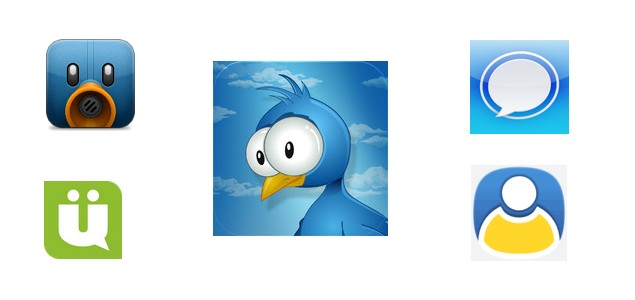- Home
- Social networking
- Social networking News
- Twitter's move to curb third party clients may prove self destructive
Twitter's move to curb third-party clients may prove self-destructive

First, let's summarise the changes that Twitter has announced via a blog post.
1. Authentication required
Current Policy: Currently, in v1.0 of the Twitter API we allow developers [...] to access public information from the Twitter API without us knowing who they are.
Proposed Change: In version 1.1, we will require every request to the API to be authenticated.
What does it mean? Right now, apps can access public information from Twitter freely. Going forward, they'll need to authenticate themselves before requesting ANY information.
Likely impact? Minimal. End users are not likely to face any impact due to this change. This is one of the sane changes, that should help Twitter weed out rogue bots.
2. Per-endpoint rate limiting
Current Policy: In version 1.0 of the Twitter API we limit the number of authenticated requests applications can make to 350 calls per hour, regardless of the type of information the application was requesting.
Proposed Change: In version 1.1, we will provide per-endpoint rate limiting on the API. Most individual API endpoints will be rate limited at 60 calls per hour per-endpoint. (Some) applications will be able to make up to 720 calls per hour per endpoint.
What does it mean? The number of requests an application can make per hour determines how many times it can ask Twitter for information, like profile data, new Tweets for your timeline etc.
Likely impact? While 60 calls per hour may seem enough, it may limit the ability of apps to update the timeline in real time, while performing other day to day activities like requesting profile information. The clause that some apps may get 720 calls per hour means certain developers may get preferential treatment compared to others. File this one under inconvenient, rather than anything sinister.
3. Display Guidelines will be Display Requirements
Current Policy: Twitter has a set of Display Guidelines that need to be followed while sharing/ displaying tweets anywhere on the Internet/ mobile/ other devices.
Proposed Change: We will require all applications that display Tweets to adhere to [display guidelines]. Among them: linking @usernames to the appropriate Twitter profile, displaying appropriate Tweet actions (e.g. Retweet, reply and favorite) and scaling display of Tweets appropriately based on the device.
What does it mean? Twitter has gone from saying "we would like you to display the tweets in this way" to "you HAVE to display tweets this way". You no longer have a choice.
Likely impact? Ever quoted someone's tweet in a blog post or an article? Now, you must follow Twitter's guidelines, including linking back to the profile etc., else, you can't do it. The next time you want to share tweets, Twitter wants you to use the "embed tweet" option found on its site.
4. Requiring pre-installed client applications to be certified by Twitter
Current Policy: There's been no official Twitter policy - at least publicly - on this. Manufacturers are free to include any Twitter client they want.
Proposed Change: With v1.1 we will require developers that are building client applications that are pre-installed on mobile handsets, SIM cards, chipsets or other consumer electronics devices to have their application certified by Twitter. If you ship an application pre-installed without it being certified by Twitter, we reserve the right to revoke your application key.
What does it mean? Every mobile/ tablet/ PC manufacturer, anywhere in the world will have to get Twitter's permission before they ship a device with a pre-installed Twitter app.
Likely impact? Expect official Twitter apps, or certain Twitter "authorised" apps to start showing up in more and more devices. When manufacturers approach Twitter to get authorisation for pre-installing certain clients, who's to say Twitter won't "gently nudge" them in the direction of its own clients.
Should some unauthorised clients slip through the net, Twitter can revoke the application key of any app that ships pre-installed on any device without its permission. If an application key of any app is revoked, the users affected are not just the ones using the "pre-installed" version, but everyone who's using the app.
5. Limit on the number of users a third-party client can have
Current Policy: There's no limit on the number of users that can use a third-party client, and thus the number of user tokens an app can have access to.
Proposed change: We will require you to work with us directly if you believe your application will need more than one million individual user tokens. (Additionally), you will need our permission if your application will require more than 100,000 individual user tokens. If your application already has more than 100,000 individual user tokens, you'll be able to maintain and add new users to your application until you reach 200% of your current user token count (as of today).
What does it mean? If a third-party app gets too big, Twitter reservers the right to step in! All third-party clients will be limited to a maximum of 100,000 users (or twice their current user count, if they already have more than 100,000 users).
Likely impact? The death of third-party clients. No, that's not too dramatic a statement. The moment you get too big to ignore (i.e. 100,000 users), Twitter will need you to get their permission to continue. If that isn't draconian and controlling, what is?
Why is Twitter doing this?
To be fair to Twitter, there has been plenty of warning that some of these changes would be coming. But, clearly, no one foresaw the extreme measure of putting a hard limit on the number of users a third-party client can have.
Which brings us to why Twitter is making these changes? The short answer, advertising revenue. Twitter has caught the imagination of users across the world the way very few websites have. However, it has struggled to translate its large mindshare and growing user base into any kind of substantial revenue.
Twitter has rarely discussed its numbers in public, but digital media analysis firm eMarketer estimated in January that Twitter's revenues could reach $260 million in 2012 and $540 million in 2014. Compare that to the $3.7 billion in revenue that Facebook generated last year. (Source)
Twitter has tried a few revenue options - advertising, sponsored tweets, sponsored trends, amongst others. The audience that sees these messages, and the way they seem them, is greatly impacted by the medium (or the client) that they use.
For example, my favourite client may choose to "bury" the trending topics somewhere in the UI, thus robbing the sponsor of the said "trending topic" the mileage it would have got if I was using the "official" Twitter website or client, which, of course, would give prominent placement to its sponsors.
Now let's say 50% of Twitter users prefer to use non-official clients. This means that the chance that advertisers' message is reaching the intended audience is greatly reduced. Certainly most "geeks" and "power-users" prefer using various third-party apps, and though they may not represent a large part of the total user-base, they are the ones that play a huge role in keeping the conversation going on Twitter. It is this group that the advertisers are targeting when they shell out the big bucks, not the spam bots or users with 3 tweets and 0 followers.
Unfortunately, it is this group that Twitter is going after with their API changes. Twitter is hoping if it makes it inconvenient to develop third-party clients (or certainly popular third-party clients), the quality of third-party clients will drop, and people will be forced to shift to the official clients.
Why this would be a wrong move
Twitter's move smells of desperation mixed with a dash of misplaced hubris. Sure, it's within its rights to explore various revenue streams, and having everyone use the official clients seems like an easy way to do this, but it's Twitter that stands to lose in the long term, should this plan go through.
Third-party clients like Tweetie (acquired by Twitter), TweetDeck (acquired by Twitter), Tweetbot, and countless others, are an essential part of the Twitter experience. Without fully-functional clients such as these, Twitter would be a lesser, and certainly a more sparsely populated, place.
I, for one, can't imagine using Twitter via only its website. Sure, it's great for an "emergency", but the clients that I use (Echofon on Mac, Tweetbot on iOS) kick its backside, both, visually and functionally. What would I do without Echofon on Mac; use the official client? No chance! I'd stop using Twitter altogether before switching to that monstrosity of a client, that even Twitter doesn't love, given it has seen no updates for 1 year, 2 months and 16 days!
You may think people like me, who say they'll stop using Twitter without third-party clients, would represent a small percentage of the total Twitter population; one that Twitter can safely ignore. Think again. One of the biggest reasons why a lot of users love Twitter over, say, Facebook is the way the former has embraced third-party clients. While there are apps that let you check Facebook updates, and post updates, the only way to get the complete Facebook experience has been the Facebook website as well as the official mobile apps.
Contrast this with Twitter's approach (until now). Don't like the official website? Here's something awesome that these other guys built. And another. And another. Users have literally hundreds, if not thousands, of options to choose from in terms of how they want to consume, and interact with, Twitter. You are sure to find a Twitter client that suits your need if you look long enough. Contrast this with Facebook - here's the official website, here are the official apps - if you don't like them, you have these extremely crippled other options. Do you want to use those? No? Didn't think so, welcome back and enjoy the official website and apps!
This is what Twitter wants to become. It wants you to use their website and their apps, no matter what platform you use. So it can make sure you see their ads. Twitter thinks it can get away with this because it is big enough to ride out the backlash, and any decline in the user base that may result from the move. Think again Twitter.
Get your daily dose of tech news, reviews, and insights, in under 80 characters on Gadgets 360 Turbo. Connect with fellow tech lovers on our Forum. Follow us on X, Facebook, WhatsApp, Threads and Google News for instant updates. Catch all the action on our YouTube channel.
Related Stories
- Samsung Galaxy Unpacked 2025
- ChatGPT
- Redmi Note 14 Pro+
- iPhone 16
- Apple Vision Pro
- Oneplus 12
- OnePlus Nord CE 3 Lite 5G
- iPhone 13
- Xiaomi 14 Pro
- Oppo Find N3
- Tecno Spark Go (2023)
- Realme V30
- Best Phones Under 25000
- Samsung Galaxy S24 Series
- Cryptocurrency
- iQoo 12
- Samsung Galaxy S24 Ultra
- Giottus
- Samsung Galaxy Z Flip 5
- Apple 'Scary Fast'
- Housefull 5
- GoPro Hero 12 Black Review
- Invincible Season 2
- JioGlass
- HD Ready TV
- Laptop Under 50000
- Smartwatch Under 10000
- Latest Mobile Phones
- Compare Phones
- Huawei Nova 15
- Huawei Nova 15 Pro
- Huawei Nova 15 Ultra
- OnePlus 15R
- Realme Narzo 90x 5G
- Realme Narzo 90 5G
- Vivo S50 Pro Mini
- Vivo S50
- Asus ProArt P16
- MacBook Pro 14-inch (M5, 2025)
- Huawei MatePad 11.5 (2026)
- OnePlus Pad Go 2 (5G)
- Huawei Watch 10th Anniversary Edition
- OnePlus Watch Lite
- Acerpure Nitro Z Series 100-inch QLED TV
- Samsung 43 Inch LED Ultra HD (4K) Smart TV (UA43UE81AFULXL)
- Asus ROG Ally
- Nintendo Switch Lite
- Haier 1.6 Ton 5 Star Inverter Split AC (HSU19G-MZAID5BN-INV)
- Haier 1.6 Ton 5 Star Inverter Split AC (HSU19G-MZAIM5BN-INV)















